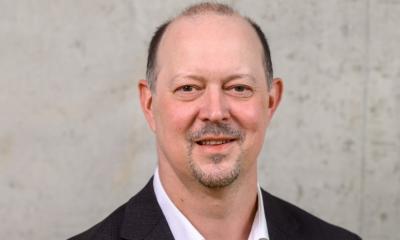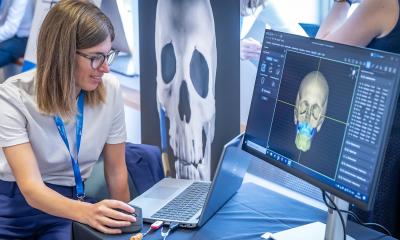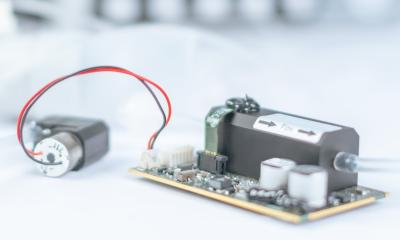The increasing value of Medica worldwide
A statement by Jochen Franke, CEO of Philips Healthcare Germany, Austria and Switzerlandand, Head of the Advisory Council at MEDICA 2010.


‘Germany is the nation of cars.’ Over the years, everybody trying to summarise what the German economy,
its development potential, its added value and the size of its workforce are all about has made this statement.
Germany is still the nation of cars. However, the statement requires an important addition: Germany is a nation of cars and healthcare. More than four million people work in the German healthcare industry; every tenth Euro of the gross domestic product is generated here.
The market for medical devices is characterised by strong growth and a vigorous exchange of goods worldwide. The annual world trade volume for medical devices, instruments and products produced and sold currently stands at around €340 billion. In the context of this booming market, there are two main features that set Germany apart from other industrialised nations: the strong industry and the strength of its export. German med-tech companies are worldwide market leaders in many areas.
During the recent economic crisis, the medical devices industry, innovative and often dominated by mid-size companies, turned out to be an important driver in the stabilization of economic development. The inventiveness of this industry can be substantiated with facts. The number of patents lodged in the field of medical technology is considerably higher than in other innovative sectors in Germany. It even outpaced the car industry, as well as the data processing sector. German medical technology manufacturers achieved around a third of their revenue with products no older than three years. Over the next few days, visitors from all over the world can find out about the many innovations developed in this innovative sector at MEDICA 2010. The products on offer range from simple gauze bandages, syringes, catheters, sterilisers, wheelchairs and operating tables to the most up-to-date medical imaging systems. Be it innovative applications in laser technology, groundbreaking diagnosis and treatment procedures or the continuous further development of minimally invasive surgery – the speed of progress in medical technology is impressive. This is also reflected in the sales figures: Since the year 2000, turnover has increased by an average 8% every year. The temporary decline by 4% in 2009, due to the economic crisis,
will be easily compensated for this year. All signs for 2010 point towards renewed growth for the 1,200 companies.
Medical technology ‘made in Germany’ has an excellent reputation worldwide. This is confirmed by the high rate of export of more than 60%. Increased turnover abroad, and also at home, is likely to add up to a positive two-figure percentage at the end of the year, with a total turnover of almost €20 billion.
Europe and the US remain the main export markets for the medical technology companies present at MEDICA, the world’s largest medical exhibition. But the readiness of people in emerging market countries to spend more money on health also increases along with their rising income. The large number of visitors from abroad at MEDICA, particularly from the Asian and Latin American growth markets, is an indication of this. Over the last few years more than 135,000 specialist visitors have attended MEDICA, and almost every other visitor did not come from Germany. Due to its high and increasing population, Asia is becoming more and more lucrative as a market outlet for medical technology. Thef act that the Chinese Government is planning to bring its hospitals up to Western standards, for instance, is a contributing factor.
But Eastern Europe and Russia also have a lot of catching up to do, and many healthcare institutions have to be modernised. After-sales service is important here, as there is often a lack of staff able to carry out the service and maintenance of complicated equipment. To achieve international success, Germany should be understood as a leading market, and we need to strengthen this awareness. Innovative systems and products can only be marketed and exported if their advantages have already proven themselves at home. Everyone at MEDICA will soon grasp the scope of the competition for the current and future, healthcare markets worth billions.
Of the 4,300 exhibitors at MEDICA who, together with more than 500 exhibitors at the simultaneous supplier exhibition COMPAMED, fill the 19 exhibition halls, two thirds are not from Germany. The German medical technology companies will continue to be able to face this competition if the opportunities and cost savings potentials of innovative procedures are recognised and utilised in Germany. The objective is to break up rigid ways of thinking and not to see medical technology only in terms of the cost of investment during the implementation of technology for in- and out-patient care.
The cost savings potential of innovations such as the numerous examples shown at MEDICA can be easily quantified. The Specialist Association for Electro-Medical Technology, part of the ZVEI (German Electrical and Electronic Manufacturers’ Association) and the industry association SPECTARIS, together with a consulting firm, have made a good job of this. They carried out several studies on the savings potential of medical devices and products for various different areas of application. Based on 30 examples, studies from the years 2006, 2007 and 2008 alone showed a savings potential of more than €2.7 billion.
Modern technology therefore pays for itself, and it is the German market that should have a signal effect. This lends itself to a comparison with the car industry. True to the motto: If a car is suitable for the German motorways and mobility requirements, and has proven itself to critical, German drivers in this very complex market thousands – or millions -- of times over, then it is suitable for use in almost all other countries. The similarities to the medical technology market are obvious:
New procedures for the diagnosis, treatment and prevention of diseases are increasingly based on the complex networking of humans and technology. These days, minimally invasive surgery would not be possible without modern imaging systems and, in the same way, it would not be possible to carry out organ transplants without accompanying drug treatment. New materials are becoming increasingly important in orthopaedics and accident surgery. Interdisciplinary cooperation is called for here. Not only doctors and engineers, but also psychologists or experts in administration and organisation, work together today. To cut to the chase: There is a strong agglomeration of medical, organisational and technological know-how in Germany.
This is reflected in the 90,000 surgeries, 2,000 hospitals and more than 1,000 medical centres staffed by more than 300,000 doctors. Innovative procedures and technology that are being established here are also likely to assert their position worldwide. Those who block innovation and inventiveness, who always focus on misgivings and shy away from the cost of investments will gamble away the potential returns – returns in the context of good patient care and in the context of participation by the German industry in the ‘powerplay’ of a booming world market.
A glance at the demographic developments in Germany suffices to understand the further growth potential of medical technology. A study carried out by Deutsche Bank with realistic expectations came to the conclusion that the number of the over 80-year-olds will increase from currently just under five million to 7.2 million by 2030, and to 11 million by the middle of the century. Germany needs to face up to these developments and to prepare for them appropriately. To optimise patient ‘workflow’ in the sense of efficient and effective treatment, the industry is already pushing for a networking of individual machines into integrated systems. This ensures the smooth flow of information and communication between all stakeholders in the care process. And the industry continues to work on a multitude of applications to ensure that people can also be cared for at home, in the best possible way, both today and in the future. The formerly small field of telemedicine symbolises this development. Just as the number of exhibitors and their products and solutions for this sector at MEDICA has grown continuously over the years the market has picked up a lot of pace with regards to the speed of its growth.
No matter which study you look at, the market for telemedicine will continue to grow strongly. Some banking analysts even talk about annual growth rates in this field of 10% until the year 2020. The industry in any case is its own best advocate, and is ready and well equipped for the future. I would like to wish you all an exciting and informative MEDICA 2010.
Speech given on the occasion of German Chancellor Angela Merkel’s visit at Medica.
17.11.2010









